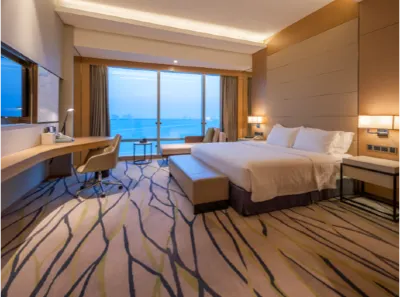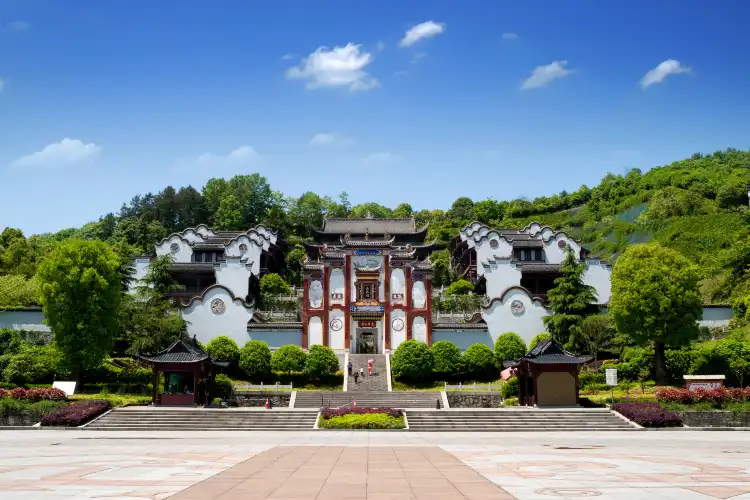
Search Best Hotels in Zigui
Enter your dates for the latest hotel rates and availability.
Scroll down to see hotels
Filter by:
Hotel Star Rating
≤2345
Guest Rating
Amazing 9+Great 8+Good 7+Pleasant 6+Popular Filters for Zigui
Three Gorges Bamboo SeaHotel2 bedsFree parkingQu Yuan's Hometown Cultural Tourism ZoneHotelsWithin 1 kmBreakfast includedGreat 9+24-hour front deskProperty Type
HotelChinese innFarm stayHomestayInnProperty facilities & services
Free parkingRestaurantCurrency exchangeParking availableWi-Fi in public areasLuggage storageWake-up callElevatorLaundry roomPets welcomeSmoking areaEV charging stationConference roomCar rentalsBarbecueGymairport transfersBarSpa52 hotels in Zigui for your stay
Choose your travel dates to see the latest prices and deals.
Most Booked
Lowest price
Closest to downtown
Highest Rated
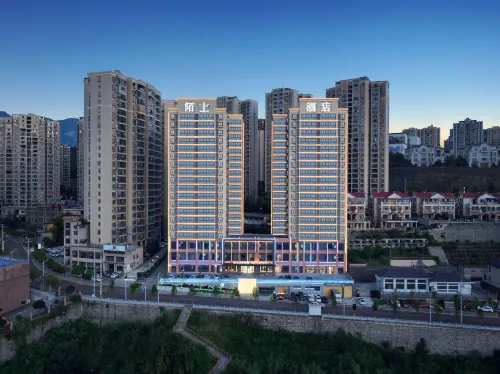






99+
Hotels in Zigui
 No. 1 of 4-Star Select Hotels in Zigui
No. 1 of 4-Star Select Hotels in ZiguiGym
Private parking
EV charging station
+14
"The hotel is very cost-effective, Song style decoration, the hotel is very new, the room is clean and comfortable, the whole room is smart, and the robots deliver food. You can see the intentions everywhere. The breakfast is also very good. There are many varieties. The only dissatisfaction is that the parking lot under the hotel is very narrow. When I reversed in, I hung up the car. If this problem can be improved, it can be regarded as a perfect hotel of the same grade and price."
Outstanding
934 reviews
9.4/10
1 night
From €19

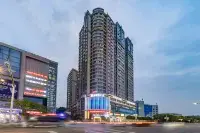





99+
Hotels in Zigui
Gym
Private parking
24-hour front desk
+10
"When I checked into the hotel on the evening of October 17, it was heavy rain outside. As soon as I entered the lobby, two enthusiastic little sisters handed me a cup of hot tea, and one helped me dry the suitcase, and was immediately warmed. The check-in procedure was completed soon, and I traveled to Zigui alone. I was not familiar with the transportation, dining and scenic spots here. The little sister at the front desk patiently told me the travel route and time and introduced local food specialties. After check-in, the hotel environment exceeded expectations and the price was very high. The next day, according to the guidance of the little sister at the front desk, I took the 809 special line (very close to the hotel) to visit the Three Gorges Dam, the Three Gorges Migration Museum, and Qu Yuan's hometown. I was shocked by the magnificentness of the Three Gorges Dam, and I was also moved to Hubei during the process of the large relocation of millions of migrants. When I parted, the little sister at the front desk sent snacks and water again, so that I continued to feel warm during the next trip. Thank you, Zigui, my little sister, welcome to the Northeast to play."
Outstanding
750 reviews
9.5/10
1 night
From €16







89
Hotels in Zigui
Private parking
Gym
24-hour front desk
+5
"The layout of the whole room is also very good, the room is very spacious and very clean. Especially the front desk service is very warm and thoughtful. The bed is moderately hard and soft, and the sleep is very comfortable. The room is soundproofed and there are many restaurants around, which is convenient for dining.
It is recommended."
Outstanding
623 reviews
9.5/10
1 night
From €16

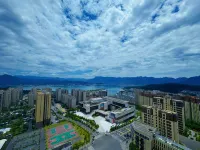





99+
Hotels in Zigui
 No. 1 of Premium Hotels in Zigui
No. 1 of Premium Hotels in ZiguiGym
Public parking
EV charging station
+14
"To be honest, this hotel is quite good, with beautiful environment, majestic lobby, and especially the small garden of the hotel in this season, with roses and roses in full bloom, very beautiful. The lady at the front desk has a nice smile and speaks very gently, and most importantly, she gave me a complimentary breakfast. The room is also very good. Because of my bad waist, I have high requirements for the bed, but I slept very well here one night. There are plenty of parking spaces, and the parking spaces are also large... In short, this hotel is really good"
Good
821 reviews
9.1/10
1 night
From €34
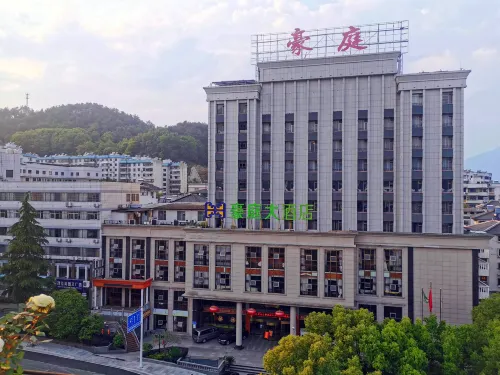

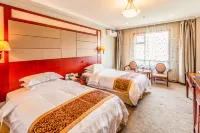
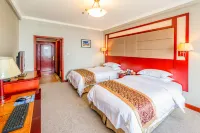
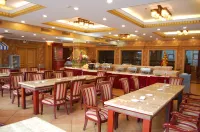


96
Hotels in Zigui
Parking
24-hour front desk
Luggage storage
+6
"Mermaid Meat Test
advantage:
1. Location The hotel is easy to find, and the location is also very good. You can walk to the business district in ten minutes, and it is about a 10-minute drive from Qu Yuan's hometown. Some room windows can still see the Yangtze River.
2. The hotel facilities are relatively old, but the rooms are relatively large, and they are still relatively clean. The front desk service attitude is also very good.
3. Very quiet, I feel that this Zigui city is relatively quiet and a very comfortable small city.
4. Parking is convenient, and there are still many parking spaces in the basement of the hotel.
5. The breakfast in the hotel restaurant is cheap, and the breakfast for 4 people is more than 30.
insufficient:
1. The decoration is relatively old, especially the bathroom is relatively small, there will be water on the floor of the toilet after taking a bath, so be careful not to slip.
2. Garage lighting is not working well.
Overall satisfied."
247 reviews
8.5/10
1 night
From €14







38
Hotels in Zigui
Private parking
24-hour front desk
Luggage storage
+9
"Location: The location is very good, there is a park opposite to take a walk around to see the Three Gorges Dam, which is great. It is also very close to the museum.
Facilities: The hotel is clean and the facilities are relatively new
Hygienic: Hygiene is OK, the washing machine is a bit slow, and the washing time is longer
Environment: There are several restaurants around you can eat
Service: Courtesy of reception"
Very Good
464 reviews
9.3/10
1 night
From €18
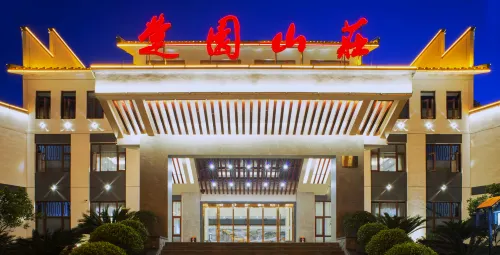


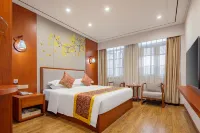

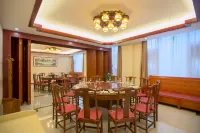

44
Hotels in Zigui
Executive lounge
Gym
Parking
+16
"The hotel environment is really good. You can see the hotel's eye-catching signboard on the road. Because it is very convenient to bring your family to play and choose this price store, the front desk lady is very enthusiastic. I don't know if it is during the holiday. The hotel also prepared a warm snack. It is very good."
Excellent
208 reviews
9.7/10
1 night
From €16


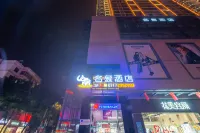




99+
Hotels in Zigui
Parking
24-hour front desk
Luggage storage
+4
"The hotel is on the fifth floor of the Vientiane City Shopping Center. The elevator sharing with the mall is a bit confusing. It feels good to enter the lobby. The front desk service is warm. The room is clean and hygienic. You can see the Three Gorges Dam in the room. It is more than 800 meters walk from Quyuan's hometown. There is a street for food and snacks around. Breakfast can be full. Parking is convenient, the only drawback is that the underground parking lot to the hotel elevator is very smelly."
330 reviews
8.9/10
1 night
From €15






6
Hotels in Zigui
Private parking
24-hour front desk
Wi-Fi in public areas
+1
"The Yangtze River Three Gorges in-depth trip found this good review of the homestay, it is indeed very good, the river view room is also very good. There seems to be no restaurant near a small village on the edge of the Yangtze River. Please arrange the local chicken Yangtze River fish.....Especially delicious"
Perfect
5 reviews
10.0/10
1 night
From €16
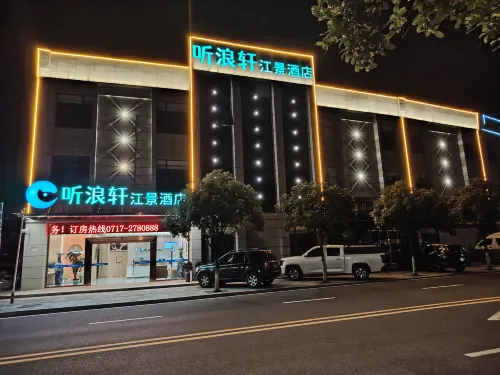






50
Hotels in Zigui
Public parking
24-hour front desk
Luggage storage
+4
"The hotel is expected to be simple and elegant, with light wood bedsides with two wall lights, and soft light creates a warm atmosphere. The white bedding on the bed is flat and spread out, and the two pillows are placed in an orderly manner. The boss also prepared a disposable face towel, as well as a spare charger. The decorative paintings above the bedside add a bit of artistic atmosphere to the room, and the overall feeling is comfortable. The river view room can directly see the Three Gorges Dam, you can feel it without going out."
Outstanding
212 reviews
9.5/10
1 night
From €18
Trip.com's insights for hotels in Zigui
Plan smarter with Trip.com’s data-backed insights on travel seasons so that you can book your Zigui hotel at the right time!
What is the cheapest day of the week for hotels in Zigui?
Hotel rates in Zigui are typically lowest on Wednesday, with average nightly rates around €35. Saturday tends to be the most expensive, averaging €61 per night.
(Based on Trip.com data from December 28, 2024 to December 28, 2025.)
(Based on Trip.com data from December 28, 2024 to December 28, 2025.)
0
€20
€40
€60
€80
€58
Mon
€57
Tue
€35
Wed
€49
Thu
€55
Fri
€61
Sat
€36
Sun
Trending places in Zigui
Find top attractions and hotspots in Zigui
Landmarks
Find your unique stays in Zigui
Immerse yourself in the vibrant atmosphere of Zigui with our handpicked accommodation options
Top hotels in Zigui
See all
Check out these top-booked hotels from the past 30 days!
No.1
8.2/10
22 reviewZigui Asia Hotel
Hotel near Zigui
"Great service"
Select dates to view pricesNo.2
9.5/10
63 reviewbdmskz
Hotel near Zigui
"Classy environment""Great rooms"
Select dates to view pricesNo.3
8.0/10
1 reviewZigui Shengtian Manor
Hotel near Zigui
"Good Location"
Select dates to view pricesNo.4
10.0/10
14 reviewZigui No.27 Homestay
Hotel near Zigui
"Clean and tidy"
Select dates to view pricesNo.5
7.7/10
11 reviewYugui Yingbin Guest House
Hotel near Zigui
"Good Location"
Select dates to view pricesNo.6
6.3/10
3 reviewThe Grand Hotel Cailin, Zigui
Hotel near Zigui
"Good Location"
Select dates to view pricesNo.7
6.3/10
6 reviewZigui Lanqi Mountain Villa
Hotel near Zigui
"Good Location"
Select dates to view pricesNo.8
9.8/10
10 reviewZigui Shuiyun Cheng'an B&B Inn
Hotel near Zigui
"Good Location"
Select dates to view pricesNo.9
9.3/10
23 reviewYiqingtan Homestay
Hotel near Zigui
"Fantastic river view""Clean and tidy"
Select dates to view pricesNo.10
8.5/10
28 reviewGuizhou Hostel
Hotel near Zigui
"Clean and tidy""Great stay!"
Select dates to view pricesZigui hotels with delicious breakfast
See all
Start your day with a tasty breakfast at one of our top hotels in Zigui.
Sanxia Shijia Holiday Hotel
Hotel near Zigui
The Sanxia Shijia Holiday Hotel provides a great place for travelers to relax after a busy day. Visitors to Zigui will find that the Sanxia Shijia Holiday Hotel is a fantastic accommodation choice. The hotel is located approximately 57km from Changyang Railway Station. The nearest railway station is Changyang Railway Station, approximately 57km from the hotel. The hotel is located close to many of Zigui's attractions including Sanxia Xiaofeng National Geopark and Jiuwan Creek. When guests have some time on their hands they can make use of the onsite facilities. This Zigui hotel features parking on site.
0.0/10
Price per night from:€9
Quxiang Yazhu Homestay (Quyuan's Hometown)
Hotel near Zigui
酒店體驗感超棒,第一次選擇民宿,主要是一家人可以住在一間房內,香艾房四個人住剛好,長者孩子都滿意。
這家民宿不僅設計感很強,房間裏裝修的質感也非常好,設施都很高檔,全屋智能,細節方面都特別優秀,老闆是真花了些心思,一進門就感受到服務人員的熱情,主動幫長者拿東西,將贓衣服洗好疊好,送上水果,屋內準備了礦泉水、茶具和飲料,入住提前打開中央空調,空調效果也非常好,早上提前準備好早餐,一家人住的非常舒服,強烈推薦!
收
9.7/10
Excellent267 reviewPrice per night from:€38
Siheyuan Bed and Breakfast
Hotel near Zigui
The Siheyuan Homestay in Zigui takes "harmony" as its business philosophy and is committed to creating a warm big family full of harmony, amicability, and geniality. Every guest who comes here can feel the comfortable, cozy, and warm environment just like at home.
The employees of the Siheyuan Homestay in Zigui adhere to the service concept of being pleasant-faced and believing that harmony brings wealth. They ensure that every guest can experience sincere care and meticulous and attentive service. It enables you to have a pleasant and unforgettable journey and vacation here.
Our homestay not only provides comfortable guest room services but also offers catering services featuring characteristic rural dishes of Zigui.
Let's enjoy a harmonious and wonderful life here together. The Siheyuan Homestay in Zigui looks forward to your arrival!
8.6/10
23 reviewPrice per night from:€23
/10
Price per night from:€14
Linxi Yunshe B&B Inn
Hotel near Zigui
The Linxi Yunshe B&B Inn is an ideal spot for travelers wanting to discover the city. Visitors to Zigui will find that the Linxi Yunshe B&B Inn is a fantastic accommodation choice. In terms of transportation, Yesanguan Railway Station is approximately 65km away. The nearest railway station is Yesanguan Railway Station, approximately 65km away. In their spare time, guests can explore the hotel's surroundings. Guests tell us the location of this hotel is fantastic.
8.6/10
11 reviewPrice per night from:€22
Latest Reviews for Zigui hotels
See all
Explore honest ratings and real traveler reviews to help you find the perfect stay.
9.8/10
Perfect
GGuest UserThis is a garden-style homestay. Take the elevator to the fifth floor to the parking lot and find flowers and pavilions, like small western-style buildings, very beautiful, and the boss is very good!
9.7/10
Excellent
JJiadai這次是我從武漢騎行到宜昌,宜昌呢通過西騎行到西嶺峽,直接定位到了子歸這邊的一家酒店。這是我騎行過程當中也是非常棒的一家酒店,店家也很好,還送了一個倫晚臍橙,酒店很温馨,還有主題的感覺。總之就是很棒的。
9.3/10
Very Good
FFengqingwuxianAll aspects are praised, this price, the price is directly full. The location is good, the service of the proprietress is also very good, and any questions or problems can be solved immediately.
There are a lot of food and drink around, and you can visit Vientiane International City at night. Qu Yuan's hometown is right next to it, and there is a good Padang mutton noodles nearby.
9.1/10
Good
MM861002****The room was clean and tidy, the bedding was comfortable, the aisle and the smell of aroma was very comfortable. The room is also equipped with free water and snacks, afternoon tea, warm and thoughtful service, and the attitude is super good! Will come next time!
8.9/10
GGuest UserFacilities: Basically, there are everything you need to use, and there are parking spaces.
Hygienic: The cleaning is clean, no bugs are seen, there may be mosquitoes in summer, but there are mosquito coils
Environment: The environment is very good, the decoration is very good
Service: The boss's service attitude is very good and very warm
8.9/10
GGuest User在臍橙小鎮裏,買臍橙很方便。房間挺大,智能家居挺多,房間很新,熱水足,就是隔音一般,晚上那個感應燈太敏感,在床上抬腳翻個身都會亮起。在房間發現幾衹隱翅蟲,希望老闆治理一下,床頭有一點灰,衞生有待加強。廁所建議加裝排氣系統。其他都挺好。
8.7/10
11862780****The service is very good, the room is still relatively clean and satisfied!
7.9/10
BBanzhifeixiongThe location is very good, the invincible viewing room, and it is very convenient on the edge of the bus station. It is also close to the hometown of Quyuan in the scenic spot. The weather is good and you can walk over to see the sunrise. For more information, please read the official account ”Shenhu Journey”.
7.3/10
GGuest UserHotel service is good, the link is very good, clean, more than 100 yuan to live in the river view room, the window is the Three Gorges Dam, the facilities are complete, value for money, stayed for two days, parking is free, come to Zigui Travel friends this store is a good choice,
3.8/10
GGuest User【Relaxation, convenient for dining and entertainment】
FAQs About Hotels in Zigui
What hotel deals are available in Zigui?
Trip.com offers various events and deals to its users all year round. You can check the deals page to view Trip.com deals.
What are the best hotels with a spa in Zigui?
Planning a trip? A spa visit can be a wonderful part of your travel experience. Yinju Fanhua Hotel (Zigui Navel Orange Town) (from €7) provides highly rated spa services.
Which hotels in Zigui offer free WiFi?
Whether you are travelling for business or vacation, an internet connection is a must for your trip. Xijiang International Hotel (from €16), Ease Hotel (ZiGui Qu Yuan Hometown Store) (from €11) and Moshang Light Luxury Hotel (Yichang Yigui Branch) (from €9) are popular hotels with free Wi-Fi.
Is Zigui pet-friendly?
Yugui Yingbin Guest House (from €6), The Grand Hotel Cailin, Zigui (from €9) and Zigui Shuiyun Cheng'an B&B Inn (from €14) allow pets. Take your pets with you during your stay!
What are some recommended family-friendly hotels in Zigui?
Xijiang International Hotel (from €16), Ease Hotel (ZiGui Qu Yuan Hometown Store) (from €11) and Moshang Light Luxury Hotel (Yichang Yigui Branch) (from €9) are very suitable for family travel. Enjoy your trip with all the family!
Which hotels in Zigui have fitness facilities?
Xijiang International Hotel (from €16), Ease Hotel (ZiGui Qu Yuan Hometown Store) (from €11) and Moshang Light Luxury Hotel (Yichang Yigui Branch) (from €9) provide fitness facilities. Satisfy your fitness needs even while traveling!
Which hotels in Zigui provide high-quality breakfasts?
Xijiang International Hotel (from €16),Moshang Light Luxury Hotel (Yichang Yigui Branch) (from €9) and Ease Hotel (ZiGui Qu Yuan Hometown Store) (from €11) provide high-quality breakfast. Start your day with delicious breakfast!
Which luxury hotels do you recommend in Zigui?
Zigui has many luxury hotels with different styles, Xijiang International Hotel (from €16) is very popular.
What is the average hotel price in Zigui?
For hotels in Zigui, the average price on weekdays is €22, the average price on weekends (Friday–Saturday) is €22.
What are the most popular hotels in Zigui?
Zigui has many popular hotels. Whether you're traveling for business or going on a vacation, Xijiang International Hotel (from €16), Ease Hotel (ZiGui Qu Yuan Hometown Store) (from €11) and Moshang Light Luxury Hotel (Yichang Yigui Branch) (from €9) are preferred hotels.
Hotel Information for Tourists
Number of Reviews
8,197
Total Properties
52
Weekday Avg. Price
€22
Weekend Avg. Price
€22
Trending hotel
Xijiang International Hotel
